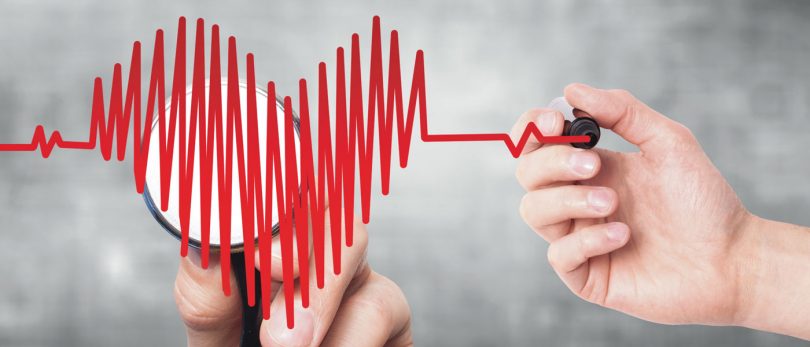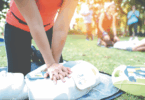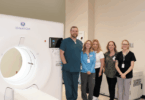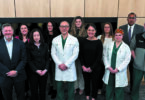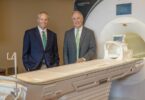A healthy human heart has the ability to self-adjust. When you’re exercising, it speeds up to pump extra nutrients and oxygen to your muscles. When you’re sleeping, it slows down and gives itself a rest, too. Sometimes the heart’s ability to regulate its rate and rhythm go awry, resulting in an irregular rhythm called an arrhythmia.
![iStock-476962365_[Converted]](/wp-content/uploads/2018/10/229_338_iStock-476962365_[Converted].jpg)
Abnormal impulses occur in the atrial chambers
“Atrial fibrillation is a complex arrhythmia, and bringing the heart back to a normal rhythm often requires electrophysiological intervention as well as medications. The combination won’t be the same for every patient, so that’s where experience becomes vital,” says Waseem Sajjad, MD, electrophysiologist.
Dr. Sajjad, who recently joined the UHS Heart & Vascular Institute, is recognized for his advanced experience in atrial fibrillation ablation, a key minimally invasive surgical treatment for A-fib — and a procedure that was unavailable at UHS prior to Dr. Sajjad’s arrival.
Music to her ears
 June Leise, 67, was feeling extremely fatigued — too exhausted to even strum a few tunes on her guitar, a hobby that normally puts a song in this Apalachin, N.Y., resident’s heart. So she decided to check in with her primary care physician.
June Leise, 67, was feeling extremely fatigued — too exhausted to even strum a few tunes on her guitar, a hobby that normally puts a song in this Apalachin, N.Y., resident’s heart. So she decided to check in with her primary care physician.
Almost immediately, Ms. Leise was diagnosed with an arrhythmia, or irregular heart rhythm. Several tests confirmed that the specific arrhythmia was atrial fibrillation.
Soon after the diagnosis, Ms. Leise met with Waseem Sajjad, MD, electrophysiologist with the UHS Heart & Vascular Institute. Dr. Sajjad recommended a combination of medication and atrial fibrillation ablation, a minimally invasive surgical procedure to correct atrial fibrillation.
“I had never heard about this procedure, but my daughter is a registered nurse, and she felt confident about Dr. Sajjad’s decision,” she says. “She also knew that UHS Wilson Medical Center is the only hospital in the area that performs this procedure.”
Returning home two days after the minimally invasive procedure — and getting right back to her normal routine — Ms. Leise says, “If anyone is considering this procedure, I say ‘go for it.’ It doesn’t feel at all like what I would call surgery, and I feel great now.”
Procedure Overview
Atrial fibrillation ablation essentially destroys tiny areas of the heart that are firing off abnormal electrical impulses, which cause the heart’s upper and lower chambers to beat out of sync. While the procedure itself is not new, the technology and equipment used for it are continually evolving and improving. UHS’ recent investment in its electrophysiology lab gives Dr. Sajjad the space and tools necessary to perform the most sophisticated atrial fibrillation ablation procedures and bring advanced cardiovascular care to patients in the Southern Tier.
Dr. Sajjad describes atrial fibrillation ablation as “very safe, with only a 1 to 2 percent risk for complications.” The first step is to put the patient to sleep with general anesthesia. Next, catheters — thin, flexible wires — are inserted into a leg vein and threaded by the electrophysiologist up to the heart.
An electrode at the tip of the wires sends out radio waves that create heat, which destroys the heart tissue causing the atrial fibrillation. After the procedure, patients typically return home the next day.
“Ablation can be a life-changing treatment for many patients who struggle with atrial fibrillation symptoms,” Dr. Sajjad says.
Identifying the Symptoms
A-fib symptoms can be nonexistent, occasional, persistent or long-standing, which adds to atrial fibrillation’s complexity. Those who do present symptoms may experience one or several of the following:
- Heart palpitations, which may feel like a racing, uncomfortable, irregular heartbeat or a flip-flopping in the chest
- Weakness, fatigue or lack of energy
- Lightheadedness or dizziness
- Confusion
- Shortness of breath
- Chest pain
In most cases, patients experiencing symptoms of atrial fibrillation begin evaluation with their primary care physician, who may refer the patient to a cardiologist. “By the time I see a patient, there’s usually been an electrocardiogram to determine if the symptoms are related to atrial fibrillation or another arrhythmia, so the patient and I have a clear picture and can immediately begin discussing treatment options,” Dr. Sajjad explains.
The doctor is also currently discussing upcoming purchases for the UHS electrophysiology lab. “Technology is moving quickly, and UHS has made a commitment to keep our lab on the cutting edge. We’re already looking into new equipment that will allow us to perform the latest advanced procedures in our lab.”
STAYING AHEAD OF THE CURVE
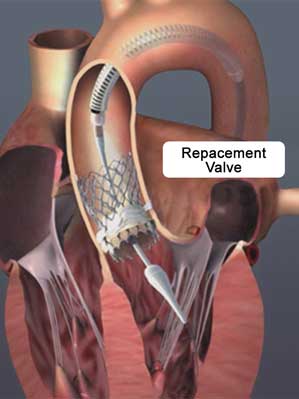 The malfunctioning valve is opened with a balloon, and the new valve is anchored into place. The catheter is then removed.
The malfunctioning valve is opened with a balloon, and the new valve is anchored into place. The catheter is then removed.
Since upgrading the UHS Wilson Medical Center Cardiac Catheterization Lab to accommodate transcatheter aortic valve replacement (TAVR) surgeries, the program has continually advanced its scope of procedures, technology and patient education.
TAVR is a minimally invasive surgery used to replace a damaged aortic valve. The UHS Valve Clinic is now performing the procedure from a choice of multiple entry points, and also now offers a valve-in-valve technique, which slips a new valve over a damaged one. UHS now also offers replacement valves from two different manufacturers, to ensure the best fit for each patient.
“Having choices allows us to consider each patient’s unique needs and choose the best solution for that patient,” says Alon Yarkoni, MD, FACC, director of UHS Structural Heart & Valve Program.
To ensure that each patient fully understands the best solution, Mary Cina, RN, UHS valve clinic coordinator, is at the ready. “The patient and I review the procedure Dr. Yarkoni will perform and all tests prior to the patient’s valve replacement. I’m that familiar face — someone to turn to with questions before and after the procedure,” Ms. Cina emphasizes.
Read more about TAVR at UHS.

